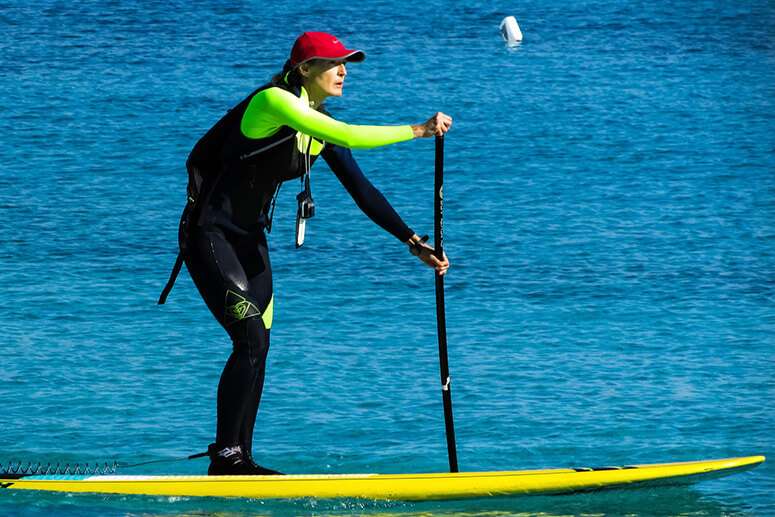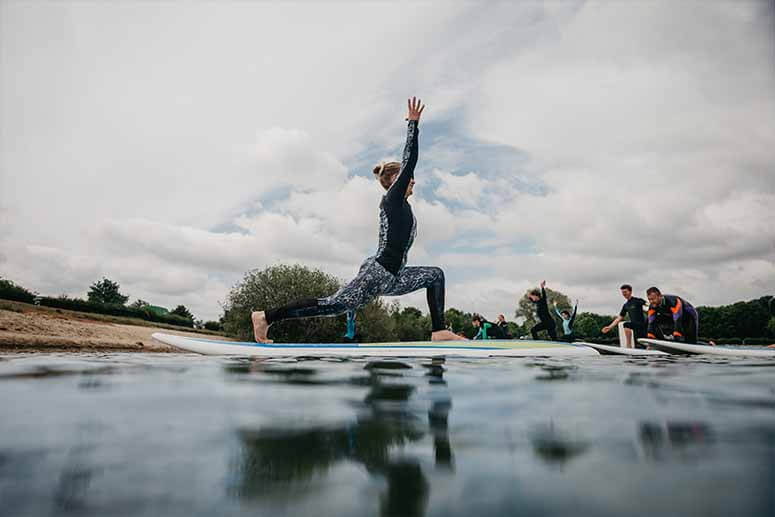
SUP has been booming in the world of sport these days, but you might not know the amazing history of stand up paddle boarding.
With the ever-evolving world of sports and recreation, a lot of sports concepts will come and go. Whether it be new technology, new techniques, and a new sport itself. Water sports is one of the most fast-paced activities that reinvents itself to them updated with the latest trend and the newest innovations.
One of the newest water sports that are making big waves around the world is stand up paddle boarding, or SUP. Although it has been practiced as a recreational activity around two decades ago, it is relatively not new. As a matter of fact, SUP is considered much older than surfing!
But where did this new way of exploring the water actually come from though? When did people start paddling on a floating vessel while standing up? Read on to find out.
Ancient Paddle Boarding
Ever since mankind learned how to hunt, standing on two legs has been an evolutionary characteristic that sets us apart from other animals. As humans evolve, standing upright has been embedded in our DNA for efficient transportation, hunting, fighting, and hiding from other predators. This upright stance is also present in SUP boarding.
Paddleboarding Is Referenced in the Bible

Paddleboarding is so old, that it is referenced in the bible! One of the most memorable tales in the Old Testament began with a SUP board.
When Moses was spotted floating in the Nile River by Queen Bithia, the Pharaoh’s daughter, in 1275 BC, she was floating on a water vessel while using a pole to steer and move forward, which she stood upon to gain a better view of baby Moses, stuck on the reeds.
Peruvian Fishermen Knew How to Paddleboard

Moreover, 3000 years ago, in the city of Chan Chan, Peru, native fishermen rode the waves on floating vessels called “caballitos de totora” which translates to “little horses made of reed”. They are unstable vessels composed of reeds often used for fishing with the support of bamboo poles for steering.
Aside from fishing, Peruvian fishermen also used for entertainment, as modern-day surfers do. They would paddle towards the land they would use the waves to propel them back. It is believed the more skilled fishermen would stand up and steer using their paddles. Even the earliest of paddle boarders knew how to have fun on the waters.
Middle Easterners Used Paddleboard for Fishing

Way back from 800 AD to 1300 AD, fishermen from the waters of the Persian Gulf, Mesopotamia, the Mediterranean, the Red Sea, and the Sea of Galilee have been using a boat that is used while standing up, a Hasake boat. The ancient Hasake boats have very similar features to the modern-day SUP.
The birthplace of the Hasake boat is undiscovered, but it is believed that its contribution to the aquatic world came about during the Islamic Renaissance.
If you want to experience, an ancient SUP board, Hasake boats are still existing in Tel Aviv, Israel, being used for fishing and leisure. It is also the primary rescue vessel used by the Tel Aviv lifeguard.
How Hawaii Made Stand Up Paddle Boarding Popular?
Even though SUP boarding has roots from around the world, it is evident that the Hawaiians innovated and popularized the SUP we know today.
The first reported encounter of paddle boarding was in 1788 when European Captain James Cook witnessed the villagers riding the waves on carved Koa tree boards. The village chief always had the largest board, as much as 16 ft. Due to its overwhelming size, moving and steering require a paddle.

Fast forward to the peak of surf culture on the island of Waikiki in the 1940s, legendary surf instructors Duke Kahanamoku and the AhChoy brothers were teaching beginners to surf, where they would bring paddles out with them. In order to better view their students, and incoming waves, they would often stand and use the paddle to steer between them.
Another SUP legend, John Zapotock rode the waves of Waikiki on a SUP board for six decades. He would grab his board and paddle from the same rack he kept on the majority of his life until he died at 95. In his honor, he was named an honorary Beach Boy, even earning the nickname “Pearl Diver”.
In 1995, stand up paddle boarding became a prominent water sport in Maui thanks to the contributions of Dave Kalama and Laird Hamilton, co-creators of the tow-in surfing model. They experimented with canoe paddles for steering their boards and later designed some of the first downwind boards similar to our modern-day SUPs.
Modern Day Stand Up Paddle Boarding
Surfing culture began transitioning from the late 1900s to the early 2000s. It grew to become more popular, commercialized, and more competitive. It was the SUP boarding wave in California that introduced new life into this watersport in the 2000s.
Wave surfer Laird Hamilton started paddleboarding as a way to train when surfing is all the rage. In September 2002, Laird was spotted surfing on a six-foot board in Malibu, California, while waving an American flag.

People who witnessed this exhibition didn’t know what it is called but it is Laird’s mission to reintroduce stand up paddleboarding to the world. When surf magazines captured Laird Hamilton with his SUP and the American Flag, paddle boarding became the newest sports craze.
Although Laird Hamilton had started the SUP revolution, it wasn’t until Rick Thomas bought back a modern SUP board from Hawaii to California in 2004, which got SUP boarding started to grow. Rick Thomas had a custom paddle made for his 11 foot Munoz surfboard and the first time spectators were so amazed and intrigued.
Stand up paddleboarding had instant appeal. Paddlers no longer had to be in the middle of the sea to enjoy feeling a board beneath their feet. You can SUP on any body of water, whether flat, waves, no waves, rivers, and more.
Conclusion
From its Peruvian origins to its modern-day Hawaiian equivalent, stand up paddle boarding demonstrates an evolution in sports. With these innovations, stand up paddle boarding became a well-known sport.
What are you waiting for? Go get out there, grab your board and paddle and enjoy the waters!



